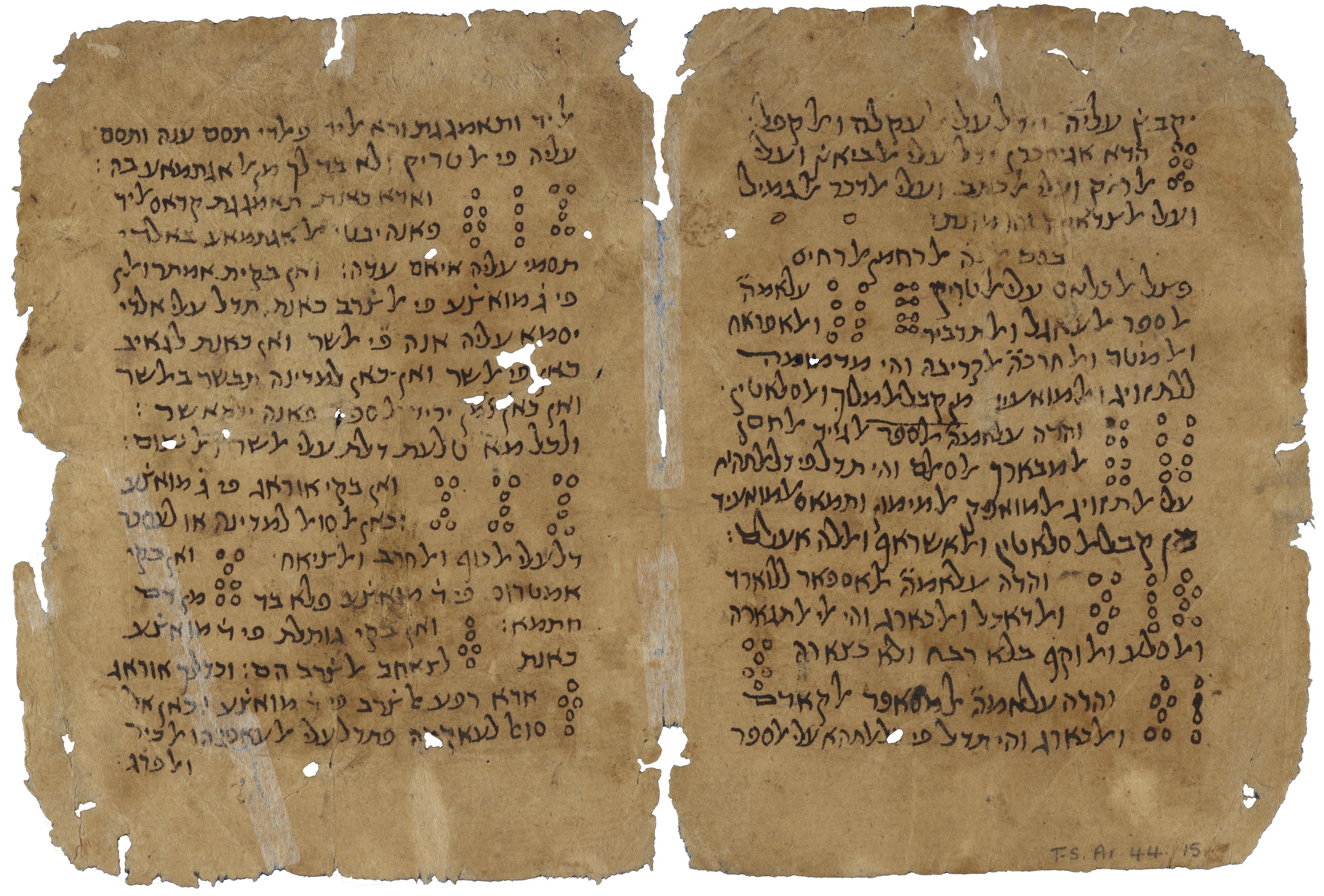Throwback Thursday: What does the future hold?

T-S Ar.44.15. This bifolium provides short descriptions of the sixteen geomantic figures bearing Berber names and begins with a series of interpretations of Triads.
Thu 10 Feb 2022
Our Throwback Thursday this week is taken from issue 68 of the printed edition of Genizah Fragments, published in October 2014, by Blanca Villuendas Sabaté:
Although Genizah manuscripts are regarded as one of the most relevant sources for social history, divinatory fragments have often been overlooked. They mirror the innermost worries, hopes and fears of the users, thus offering a unique insight to the Genizah society. Medieval peoples’ desire to know about the future was no less intense than our own desire to learn about the past. Their eagerness to know about the future gave rise to a range of diverse practices and techniques, and manuals were written that broadened transmission channels beyond oral learning and facilitated the spread of these technologies. The legitimacy of divinatory practices relies strongly upon tradition (the older, the better) and it is an accumulative type of knowledge in which an opinion can coexist with another despite possible contradictions. Therefore, these types of texts are also remarkable examples of transmission processes, particularly in the many cases where they attest to intercultural phenomena. This literary production was considerable, and divinatory texts form a significant part of the pseudo- scientific fragments found in the Genizah. For example, Gideon Bohak’s initial survey of the material found 247 divinatory fragments compared with 68 alchemical fragments. Divinatory handbooks dealing with geomancy are the most common. This scarcely known but rather popular technique was first codified between the tenth and twelfth centuries in Arabic, and was translated into Latin, Romance Languages and Byzantine Greek shortly after. It spread to Europe’s Renaissance, nineteenth-century Germany, American Voodoo and is found in well-established religious rituals on the West African coast and in Madagascar. In North Africa and the Near East, it remained a tradition uninterrupted to the present day, both for Muslims and Jews. The technique is named geomancy, ‘earth divination’, after the Arabic term ‘ilm al-raml, ‘sand science’, because sand was the surface on which castings were traditionally performed (though paper was also used extensively). The technique employs sixteen figures, each consisting of four lines that combine odd and even values, represented by one or two dots, with each given a name and a meaning. The first step in a geomantic casting is to obtain four figures following a random process. Then, the four figures – called mothers – are placed in a chart forming the first four of the 15 or 16 positions in it. Next, according to specific laws of derivation, the rest of the figures to fill the chart are obtained. The final step – predictions – involves interpretation of the chart, taking into consideration several aspects that grow in number as the science becomes more and more complex. Cambridge Genizah collections contain 11 fragments of geomantic manuals in Judaeo- Arabic, 4 in Hebrew and 3 in Arabic. In addition to this, there are another 5 fragments that consist of drafts to build a chart, hence pointing to the actual practice of this art. Study of the Judaeo-Arabic compositions has helped with the process of reconstruction using fragments from other Genizah collections. It has also allowed the identification of Arabic works and citations of the most relevant authorities in the field, such as Abū ‘Abd Allāh al-Zanātī, Abū Sa‘īd al-Ṭarābulusī and Ṭaumṭum al-Hindī. Moreover, at least four other manuscripts suggest an identification with a less-known Mamluk author named Ibn al-Maḥfūf and his unpublished work al-muṯallaṯ fī ‘ilm al-raml (‘The Triad in Geomancy’). Manuals of this type are highly significant because, unlike other manuscripts, they offer answers to specific questions that are often collected in them. Prognostications deal with personal concerns such as missing persons, marriage, pregnancy and the gender of an expected child, voyages, inheritances, the weather, business prospects and commercial transactions, as well as geo-political affairs: sultans and alliances, the government of a qāḍī or a faqīh, and war. These questions shed light on what worried the users of these manuals. For example ‘If the question was about a robbery, the owner will be lying and nothing from him can be trusted’, ‘If the question was about the encounter between two armies, agreement is closer than hostility’, and ‘If the question was about a pregnant woman, she will give birth to a boy and he will be the happiest of children’.
Add new comment